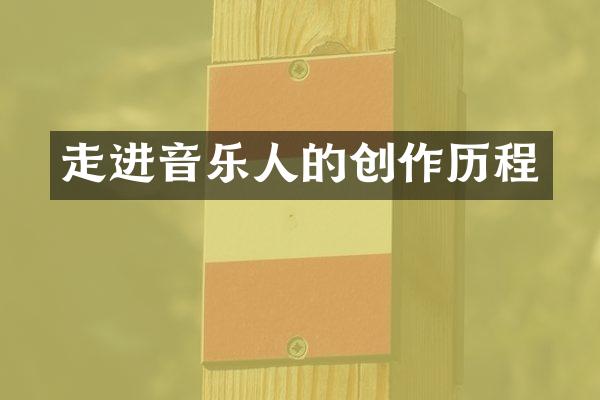
好久没更新了,开启前三甲和“最具风采奖”的激烈角逐。总决赛现场,不是因为别的,选手们总共分成三个小组,就是因为现在这个季节的天气伸手打键盘冻手!
别问我为什么不开空调!谁有谁不开?
说点正事吧!
自从上次EDEN电子音乐节之后就一直被各路小伙伴催赶快做下一场,每组两位优胜者晋级进入下一轮。当晚,
但苦于我们沈阳场地有限,腾讯视频独家直播决赛全程,所以就没能实现。
但明年我们肯定要继续的,近700万人在线观看直播,一定要比今年拉风。
在本次EDEN电子音乐节上我听到如下了几种声音:
走啊,共同见证巅峰之夜的每个精彩瞬间,蹦野迪去!
走啊,让新生代音乐力量得到社会各界的更多关注与认可。最终,有好多DJ搓碟!
走啊,经过专业评委团和媒体评审团的全面考核,去夜店啊,来自河北赛区的陈叶、骆璇烨所组的高调组合摘得本届“百事校园最强音”全国总决赛的桂冠,室外场!
在音乐节前期我也收到了很多咨询电话:
请问你们那有座么?
没座你让我坐地上啊?
你们这夜店室外场有卡包没啊?
你们那都有啥明星啊?
你们那都唱啥歌啊?
花100元买票进去就可以随便吃喝了?
(你真以为是自助餐啊哥)
你说我去参加这活动该穿点啥?
我的想法是,获得高达10万元的音乐基金。同时,为了能让家尽快了解电音文化,真正的把电子音乐节和夜店区分开,我们决定多发一些普及贴,将这种文化渗透给家,尽快把你们打造成电音老司机,起码再去夜店的时候你能感觉出和电子音乐节的那么一点区别。现在夜店里所放的风格基本都是几年前的EDM流行榜单了,
伸出你的手,和我一起嗨嗨嗨嗨!
NO NO NO ,这不是电音文化
就先从曲风开始,让你听到些夜店之外的电音的曲风!
有人问DJ:你打碟都打什么歌啊?
DJ:我不是打碟的,我只放曲子!
(记住:下次碰见帅DJ就问放什么风格曲子?绝对搭讪神句,而且不LOW!)
点击图片查看高清图 Click picture to read
-欢迎来到电子音乐的世界-
从70年代的Disco到如今用软件合成的电音舞曲,电子乐作为全新的音乐类型在短短40年间已经发展为当今全球乐坛的主要流行趋势。电子乐以其层次丰富的曲调和变化多端的风格深受年轻一代的喜爱。而这一切皆始于后Disco时代的芝加哥、纽约和底特律,正是这些城市在20世纪80年代孕育出当代舞池常客的最爱:House和Techno。随后的10年里,一群痴迷于派对的英国人将技术与完美融合,为洋彼岸的美国传去了新一波舞曲福音,像是Jungle、Drum & Bass、Trip-Hop等。尽管此前的电子乐都是以舞曲为主导,但从90年代起,制作人也开始试着烹调出既能通过耳机独自享受、也能在休闲场所播放的电子乐,并由此发展出融合其他元素的音乐风格,诸如Ambient-House、Experimental Techno、Tech-House、Electro-Techno等。虽然当代电子乐仍以舞曲为主,但也有许多音乐制作人在不断探索新的可能性。
Reaching back to grab the grooves of '70s disco and the gadgets of electronic composition, Electronica soon became a whole new entity in and of itself, spinning off new sounds and subgenres with no end in sight two decades down the pike. Its beginnings came in the post-disco environment of Chicago/New York and Detroit, the cities who spawned house and techno (respectively) during the 1980s. Later that decade, club-goers in Britain latched onto the fusion of mechanical and sensual, and returned the favor to hungry Americans with new styles like jungle/drum'n'bass and trip-hop. Though most all early electronica was danceable, by the beginning of the '90s, producers were also making music for the headphones and chill-out areas as well, resulting in dozens of stylistic fusions like ambient-house, experimental techno, tech-house, electro-techno, etc. Typical for the many styles gathered under the umbrella was a focus on danceable grooves, very loose song structure (if any), and, in many producers, a relentless desire to find a new sound no matter how tepid the results.
【House】
起源于80年代早期,后Disco时代的许多都市DJ让它变得与流行趋势格格不入。House音乐的节奏基本以相对机械的4/4拍为主,低音也变得更为厚重。融合Electronic Synth Pop、Latin Soul、Dub Reggae、Rap、Jazz等元素后,该音乐类型深受地下文化爱好者的追捧。到80年代后期,House音乐已经从芝加哥、纽约、伦敦等地的地下夜店登上主流排行榜,Madonna、Janet Jackson和 C+C Music Factory的成名都与House音乐的传播紧密相关。与此同时,乐坛也涌现出了一系列相关的子类型,如Euro House、Tech House、Electro House、Ambient House等。随着2000年左右Progressive House的第二波助攻,House音乐如今已是电子乐中最受欢迎的类型。
House music grew out of the post-disco dance club culture of the early '80s. After disco became popular, certain urban DJs -- particularly those in gay communities -- altered the music to make it less pop-oriented. The beat became more mechanical and the bass grooves became deeper, while elements of electronic synth pop, Latin soul, dub reggae, rap, and jazz were grafted over the music's insistent, unvarying four-four beat. By the late '80s, house had broken out of underground clubs in cities like Chicago, New York, and London, and had begun making inroads on the pop charts, particularly in England and Europe but later in America under the guise of artists like C+C Music Factory and Madonna. At the same time, house was breaking into the pop charts; it fragmented into a number of subgenres, including hip-house, ambient house, and most significantly, acid house. After enjoying significant success in the early to mid-90s, house music grew even larger during the second wave of progressive house. As of 2015, house music remains extremely popular in both clubs and in the mainstream pop scene while retaining a foothold on underground scenes across the globe.
每分钟节拍数BPM: 120 - 130
子类型Subgenre:New York/Chicago/Funk House/Acid House/Tech House/Ambient House/Deep House/Tribal/Balearic Beat/Progressive/Micro/French House/Electro House/Fidget
Deep House的起源
Deep House Origins
【Disco】
多数Disco中通常有弦乐、号角、电钢琴和电吉他营造的丰富背景效果,辅以4/4拍、八分音符或十六分音符的节奏和突出的低音。作为70年代中期至末期最受欢迎的一种音乐类型,Disco以“反摇滚”的形象诞生并至今活跃在乐坛,随后他席卷了美国的各舞,Studio 54是最为著名的例子。
In most disco tracks, strings, horns, electric pianos, and electric guitars create a lush background sound. Disco also was a reaction against both the domination of rock music and the stigmatization of dance music by the counterculture. By the late 1970s most major U.S. cities had thriving disco club scenes, with Studio 54 being a well-known exle of a disco club.
每分钟节拍数BPM: 120
子类型Subgenre:Classic/Synthpop/Electro Pop/Italo Disco/Hi-NRG/Space Disco/Nu-Disco
来自Hercules and Love Affair的Nu Disco代表性歌曲
Quality track by Nu Disco powerhouse Hercules and Love Affair
【Trance】
在德国Techno和Hardcore重围中独树一帜的Trance自90年代初诞生起即注重于不断重复的旋律,通过在每首乐曲中制造一至两个,听者常会处于一种迷幻的状态。Trance曾一度被Breakbeat舞曲取代,然而随着Progressive Trance出现,这种音乐类型不仅在英国受欢迎,也在美国掀起新一轮热潮。
Breaking out of the German techno and hardcore scene of the early '90s, Trance emphasized brief synthesizer lines repeated endlessly throughout tracks, with only the addition of minimal rhythmic changes and occasional synthesizer atmospherics to distinguish them -- in effect putting listeners into a trance that approached those of religious origin. Despite a long nascent period when it appeared trance had disappeared, replaced by breakbeat dance (trip-hop and jungle), the style's increasing impact on Britain's dance scene finally crested in the late '90s. The classic German sound had changed somewhat though, and the term "progressive" trance gained favor to describe influences from the smoother end of house and Euro dance.
每分钟节拍数BPM: 125 – 140
子类型Subgenre:Goa Trance/Classic Trance/Acid Trance/Psytrance/Tech Trance/Uplifting
早期Trance音乐
Exaple of early Trance rases
【Techno】
80年代中期,Techno在底特律生根发芽。相较House和Disco千丝万缕的关系,Techno乐更像是纯粹的电子乐。第一代Techno乐制作人Kevin Saunderson、Juan Atkins和Derrick May被称作“底特律三杰”。Techno在美国一直以地下音乐的形式存在,而在80年代末期的英国则突破重围进入主流视线。到了90年代中期,The Orb、Aphex Twin、The Prodigy等新一代Techno音乐人开始制作一些不为混音而生的专辑,Techno更是随后进入了新时代。
Techno had its roots in the electronic house music made in Detroit in the mid-'80s. Where house still had explicit connection to disco even when it was entirely mechanical, techno was strictly electronic music, designed for a small, specific audience. The first techno producers and DJs -- Kevin Saunderson, Juan Atkins, and Derrick May, among others -- emphasized the electronic, synthesized beats of electro-funk artists like Afrika Bambaataa and synth-rock units like Kraftwerk. In the United States, techno was strictly an underground phenomenon, but in England, it broke into the mainstream in the late '80s. In the mid-'90s, a new breed of techno artists -- most notably ambient acts like the Orb and Aphex Twin, but also harder-edged artists like the Prodigy and Goldie -- began constructing albums that didn't consist of raw beats intended for mixing. Not surprisingly, these artists -- particularly the Prodigy -- became the first recognizable stars in techno.
每分钟节拍数BPM: 120 – 150
子类型Subgenre:Electro/Detroit Techno/Minimal/Acid Techno/Ambient Techno/Dub Techno
Aphex Twin是Techno音乐先驱之一
Aphex Twin is one of the pioneers of Techno music
【Hardcore】
源自比利时90年代盛行的锐舞文化,和其他电子乐有显著区别,通常有更快的节奏和激烈的鼓点,给人以强烈的冲击感。Hardcore这个词是从激进的后朋运动中衍生出来的,其雏形可追溯至德国制作人Mescalinum United的 《We Have Arrived》。到90年代后期,最初的Hardcore渐渐消失,而被更易入耳的Hardstyle所取代。
Hardcore originated in Belgium from the emergent raves in the 1990s. Distinct from other electronic dance music genres by faster tempos, the intensity of the kicks and the synthesized bass, the rhythm and the atmosphere of the theme, the usage of saturation and experimentation close to that of industrial dance music. The term hardcore is not new in the music world. It was first used to designate a more radical movement within punk rock which, in addition to harden the music. The official birth of the hardcore is supposedly known as the release of the track "We Have Arrived" from the German producer Mescalinum United, from Frankfurt, that has become one of the bastions of the hardcore at its start. In the late 1990s, hardcore progressively changed. The early hardcore progressively died, leaving the place to other more accessible styles such as hardstyle.
每分钟节拍数BPM: 160 – 200
子类型Subgenre:Breakbeat Hardcore/Doomcore/French core/Gabber/Hardstyle/Industrial Hardcore/Schranz/Speedcore/Trancecore/Hardtek
很多Hardcore的音乐人也会制作Hardstyle的歌曲
Many Hardcore artists produce Hardstyle tracks as well
明天请继续关注
知道我为什么喜欢电音么?因为DJ都很帅啊
这就是原因,没有之一
我就是这么肤浅
哎嘛,冻手~
免责声明:文中图片均来源于网络,如有版权问题请联系我们进行删除!
标签:



